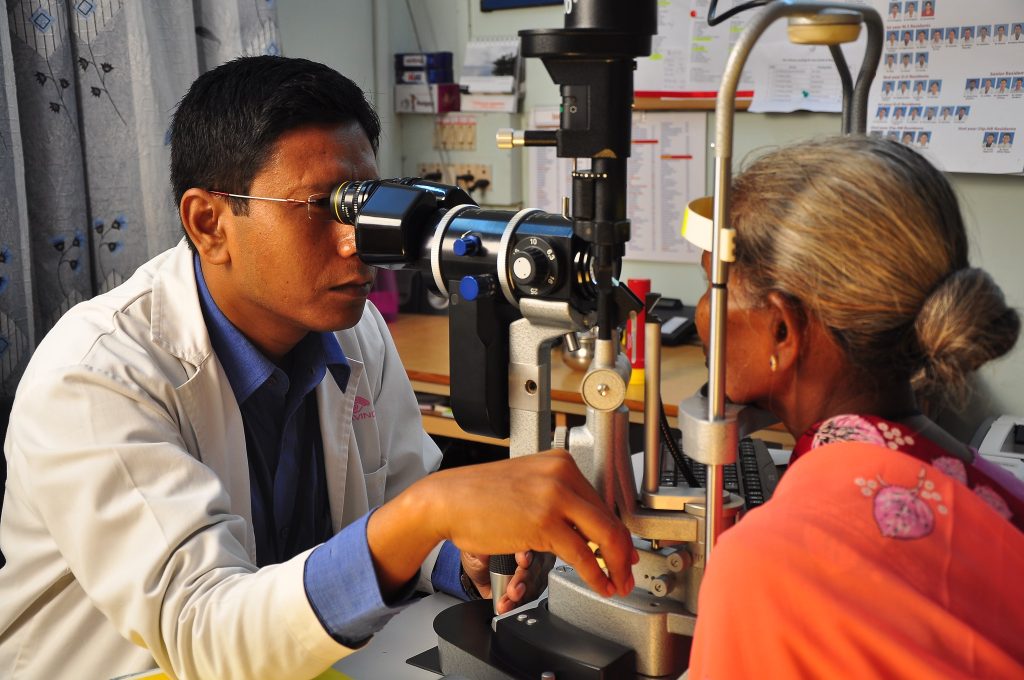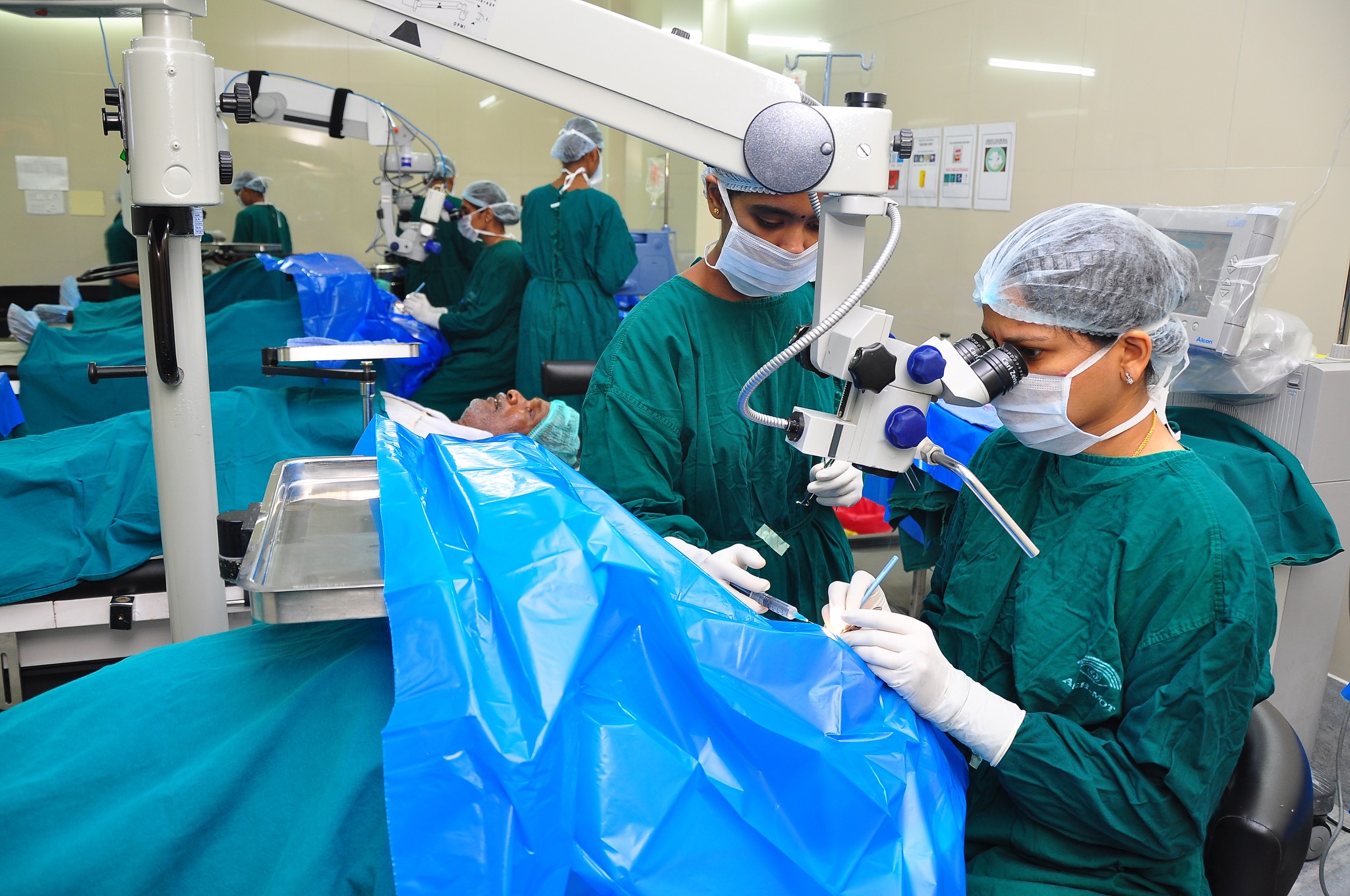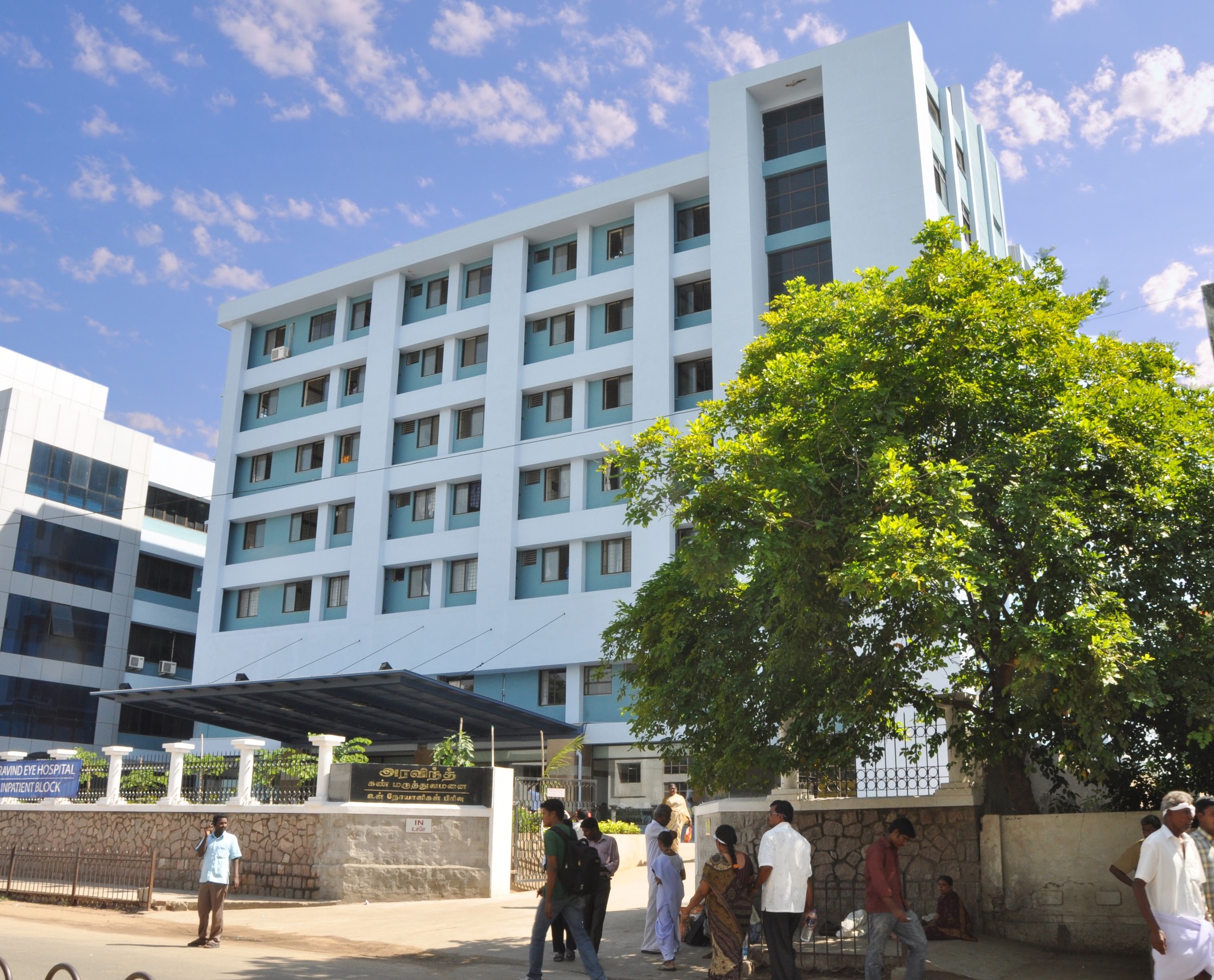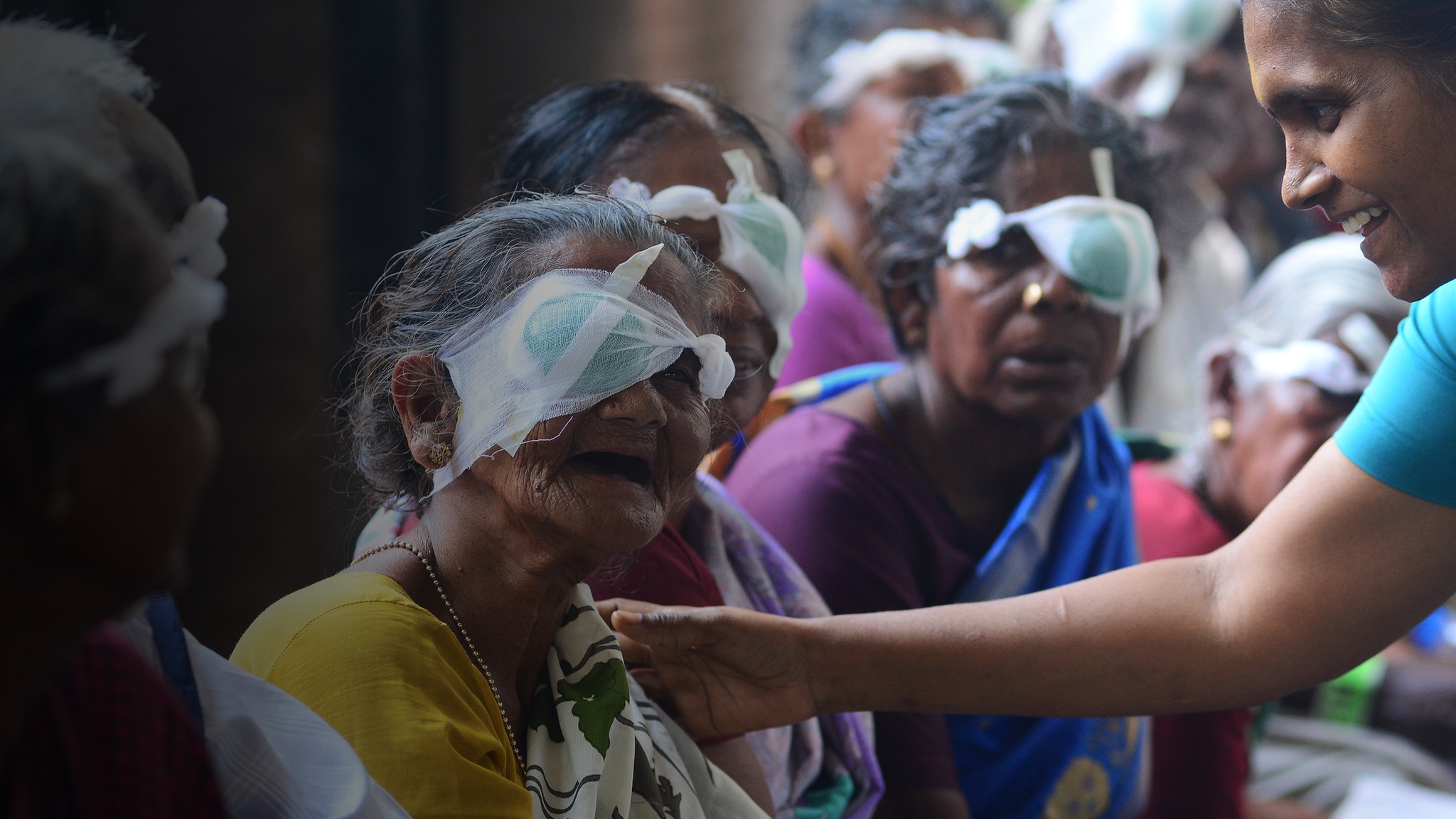Keeping their Eye on the Business of Equitable Care
It takes vision to start a good-for-the-world business. Especially when your mission is to address a serious and widespread health problem, such as avoidable blindness caused by untreated cataracts. That’s exactly what Dr. Govindappa Venkataswamy (Dr. V) was inspired to do in his native country, India. “The problem of avoidable blindness is quite high in Southeast Asia and India,” says Dhivya Ramsamy, senior faculty member of Aravind Eye Care System (Aravind). “We are genetically predisposed to cataracts, especially early onset. People tend to develop them in their 50s or even earlier.”
Challenges like a growing population, inadequate infrastructure, poverty, and illiteracy strained the government’s ability to meet the country’s eye care needs. Dr. V envisioned a new model, one that would provide equitable, high quality care for everyone, regardless of their ability to pay. He founded Aravind in 1976 with a staff of four; and what started as an 11-bed hospital is now an international standard bearer.
Today’s Aravind Eye Care System is a multifaceted conglomerate comprising eye care facilities, an ophthalmic manufacturing unit, eye banks, and post-graduate training and management consulting institutes. Aravind’s eye care facilities alone include 14 hospitals, six outpatient examination centers, and 91 primary care facilities in South India.
“Everything we’ve been doing since the beginning has been focusing on blindness from a public health point of view, keeping the bar very high for quality of care. And making it very affordable for those we want to reach,” says Ramsamy.
What many don’t know is that Aravind is a self-sustaining business that uses the .ORG domain. “People who learn that we offer free care are surprised we don’t raise funds for that,” says Ramsamy. “We are completely self-sufficient. We do not run on donations.” Instead, “Like any other business, we’ve been able to use good management practices.” Why choose .ORG if you’re a business? According to Ramsamy, the answer is simple: “Natural selection.”
In addition to providing leading-edge eye care, Aravind also is involved in eye care research and capacity-building of hospitals around the world. “Many people even in India are not aware of this aspect of [our work],” says Ramsamy. “But Dr. V. was very clear—we don’t have to do it all. We can empower other organizations as well.” Aravind provides management consulting to other centers and hospitals. Since the start of the pandemic, these trainings have occurred online, making them more convenient and accessible both logistically and financially.
As a result of Aravind’s new training model, says Ramsamy, “We have been able to see the hospitals increase volume, improve their data management, and serve more patients. Not only improving one area but improving capacity for improvement in every area they want to improve. One organization we worked with wanted to increase its surgical acceptance rate—the percentage who actually go through with cataract surgery. We strengthened their counseling and service design. For the entire cohort, we saw a 27% increase in surgeries. They got a 100-fold return on their investment in training.”
In addition to providing consultation to hospitals, another differentiator for Aravind is its dedication to patient counseling. While counseling is expected in other medical fields, such as mental health or cancer care, Ramsamy says it’s especially important in working with their patients. “They are frightened, or they lack funds, but we work with them until they understand and feel comfortable about going forward.”
Dedication to equity drove Dr. V. to create a manufacturing arm, when he realized that he couldn’t provide a better standard of cataract care at a cost that the poor could afford. Cataract surgery requires removing the eye’s lens and replacing it with a small plastic one. In India, due to the exorbitant cost of lenses, a common practice was to remove the eye lens and the patient would be prescribed thick glasses to compensate. Dr. V. was convinced that the poor needed the intraocular lens implant for them to continue to be productive. So, Aravind promoted Aurolab, which bought the lens technology in 1992 and began manufacturing them in-house, bringing the cost down from $100 to $10 per piece, then.
“It was a big game changer,” says Ramsamy. And one very much in keeping with the Aravind approach: “When you’re faced with an object in your path, you just find a new way to move around it,” she says.
To learn more about Aravind Eye Care System and their work, please go to www.aravind.org.








